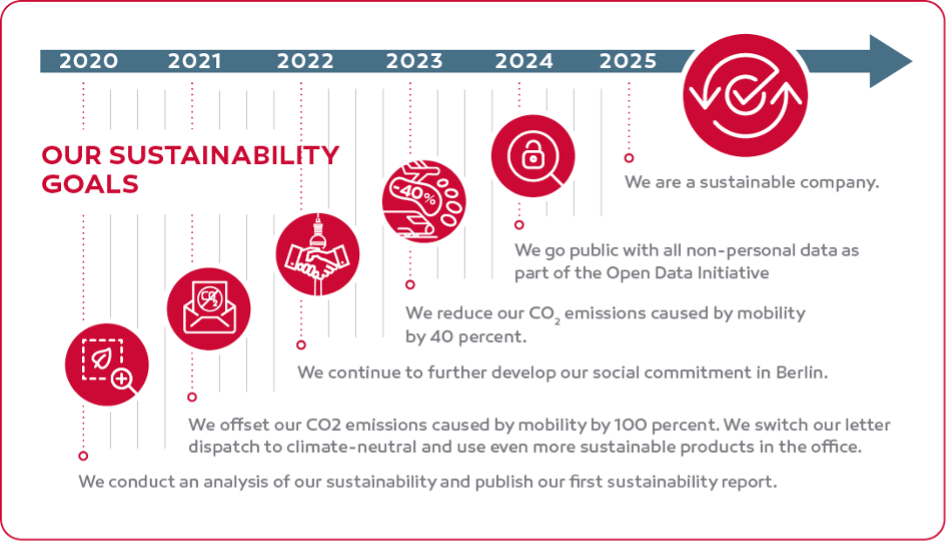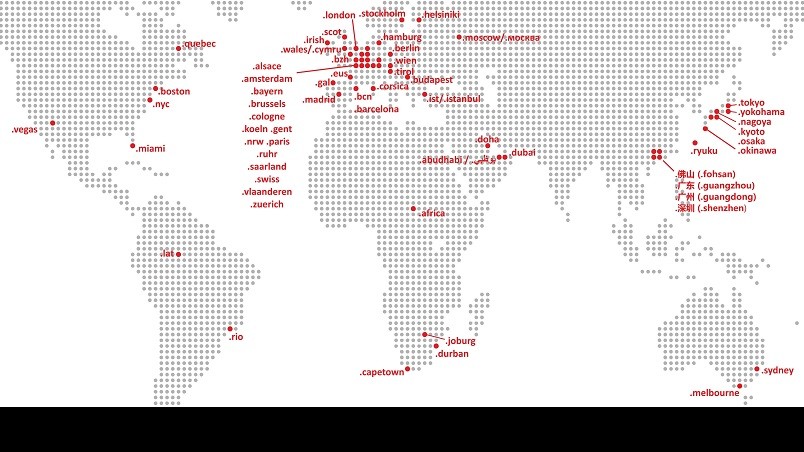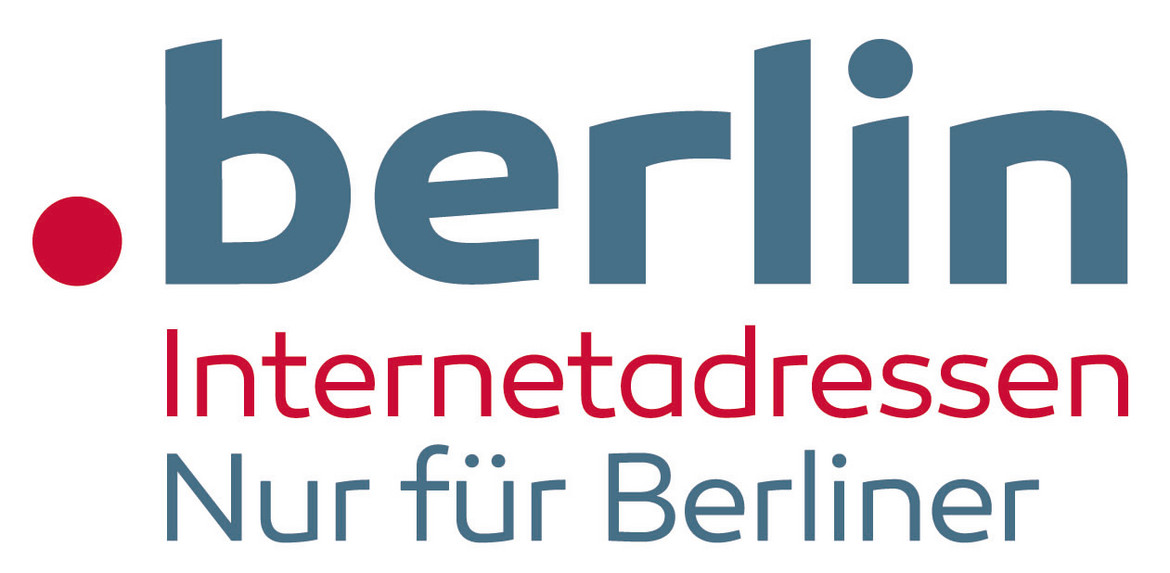Sustainability Reporting: dotBERLIN’s Journey to More Sustainability
Dirk Krischenowski from dotBERLIN takes us through the steps in assessing company sustainability, taking action & developing a roadmap to become a wholly sustainable company by 2025.

© peterschreiber.media | istockphoto.com
Sustainability has become one of the most important themes of our age. Especially ecological problems are becoming more and more urgent, as our way of life has been overexploiting the earth’s natural resources since the 1970s. In order to curb the effects, the economy as a whole and companies in particular need to reflect on their actions. We have been doing this for quite a few years now: For example, we use public transport, buy eco-conscious products, and choose refills whenever possible. What we did not have, however, was an overarching structure. To achieve our goal of being a sustainably operated company by 2025, we decided to establish a central monitoring tool: our sustainability report.
Digitality does not exclude sustainability
We at dotBERLIN operate the .berlin top-level domain. Currently, there are about 50,000 .berlin domain names registered. As a Berlin-based company and as the initiator of local domain names, we feel a special responsibility for our city and its inhabitants. Therefore, we do not only want our sustainability report to be a monitoring tool for our own activities, we also want it to serve as a role model for other companies – especially from the digital industry that we ourselves are a part of.
It is a fact that digitalization is partly to blame for the increasing emissions of climate-damaging gases: Gartner estimates that the IT industry accounts for a total of two percent of greenhouse gas emissions. This is roughly equivalent to the emissions of the aviation industry. However, sustainability is not limited to the environment. Altogether, there are three pillars of sustainability that aim to guarantee the planet’s integrity and improve the quality of life: environmental protection, economic viability and social equity.
- The environmental pillar has its roots in the many ways to search for environmental preservation. Sustainable companies study the ways to undertake their operations to cause the lowest possible impact on the environment.
- The economic pillar refers to topics related to production, distribution, and consumption. Sustainable companies do not profit at the expense of workers or through irresponsible exploitation of the environment. They do profit financially because of their sustainable attitudes that reduce materials, energy, and water, and thus also the bills at the end of the month.
- The social pillar bears on the human capital in areas like education, security, and gender equality. Sustainable companies provide an environment that stimulates a legitimate and healthy working relationship.
Goal and framework parameters
The three pillars of sustainability serve as the framework for our sustainability report. We divided it accordingly and were thus able to offer our readers a good orientation. For us, the pillars were the key to find out the areas where we were already performing well and the areas where there still was – or is – a need for improvement. This helped us determine the various steps we had to – and still have to – implement in order to achieve our goal of being completely sustainable by 2025:

Sustainability affects every business unit
Sustainability has an impact on every division of our company, which is why we decided to involve the entire team and major suppliers in the sustainability report project. This approach turned out to be particularly valuable in the initial phase, when our main task was to identify all the company areas, processes, and products that could be checked for their sustainability potential.
Sustainability affects every single process and every single decision we take at dotBERLIN: This starts with the little things, for example, when we decide to do our shopping for office supplies locally. But it also affects our business model as a whole, as it stands for durable, digital products. Operating them securely and stably is our top priority and thus one of our cornerstones of economic sustainability.
All in all, it took us about four months until we were ready to publish our first sustainability report. However, this is only a rough guide because the time required depends on the respective company. It is certain, though, that the creation of the first report takes the longest, as it starts with the thorough research of all necessary data and background information. This forms the basis not only for the first report, but also for all subsequent versions. The effort therefore decreases by and by.
Not only the time needed, but also the costs for creating a sustainability report can vary greatly. Of course, the personnel costs rise with the number of team members involved in the process. Also, further costs may arise, for example for layout and design or for the measures taken to draw attention to the report.
Five steps to finishing the report
The following steps were necessary for the creation of our sustainability report:
- Define the starting point: We got an overview of our business areas, processes, and products and considered how they could – and still can – be improved in terms of sustainability. The three pillars of sustainability helped us to identify and structure the crucial sectors.
- Set priorities: We determined the aspects that are especially important for our company and should thus be included in our report. We also made sure that these aspects create a uniform picture of our activities.
- Collect data and information: After having set the timeframe, we collected all necessary facts and figures.
- Set concrete goals: We used the information we gained to formulate concrete goals. They helped us determine how we want dotBERLIN to develop in the next few years. We decided that we want our company to be completely sustainable by 2025.
- Create the report: Finally, we created the report. It is our central monitoring tool, helping us to achieve our sustainability goals.
Guidance for our sustainability: the Sustainable Development Goals
In order to get a sense of how well we are doing in terms of our sustainability, we follow the 17 Sustainable Development Goals (SDGs) of the United Nations. They are the blueprint to achieve a better and more sustainable future for all, and address the global challenges we face, including poverty, inequality, climate change, environmental degradation, peace and justice. The outlines in the chart show which of our activities particularly contribute to achieving the SDGs:

As the chart shows, we are well on our way and therefore optimistic about achieving all our goals within the set timeframes. We recommend that companies that are new to sustainability use the SDGs as a starting point as well, and let their findings flow into their sustainability reports. Our sustainability report helped us to get an overview of the sustainability of our activities and thus uncover our strengths and weaknesses. We are convinced that the sustainability report is the central tool when it comes to managing a company’s sustainable activities and achieving its goals.
Dirk Krischenowski is an expert in Internet governance, Internet infrastructure, and digital brands. He is the founder and originator of the concept of city top-level domains. Since 2005, he has run dotBERLIN, the registry operator of the .berlin top-level domain. He is also one of the founders of and partner at DOTZON, a consultancy specializing in developing digital brands and identities. Krischenowski regularly speaks at international conferences and supports the Internet Governance Organization ICANN in developing policies which deal with the enhancement of the namespace on the Internet.
Please note: The opinions expressed in Industry Insights published by dotmagazine are the author's own and do not reflect the view of the publisher, eco – Association of the Internet Industry.





